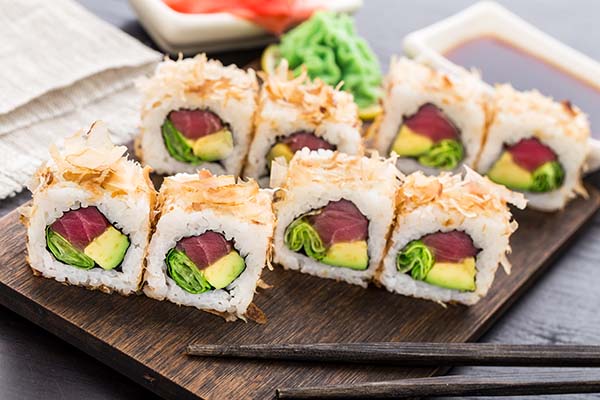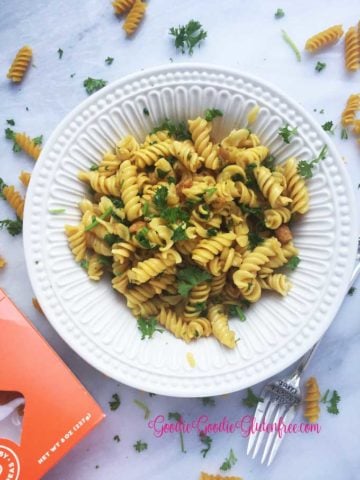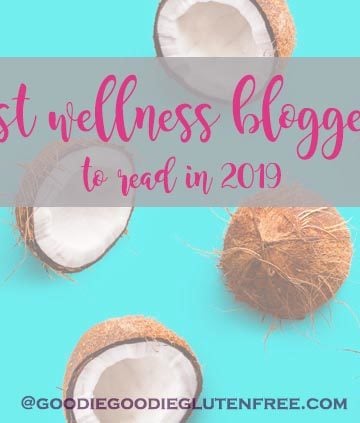I wish someone had handed me this cross-contamination Sushi Cheat Sheet when I was diagnosed with Celiac Disease. But they didn't. And Instead, I learned on the job. I became a detective when I got glutenized. I researched. I read labels. I asked questions and I learned - sometimes even the hard way.
So now, I am sharing what I have learned along my gluten-free sushi journey because I know this information is vital to you. My goal with this cheat sheet is to make you more aware. If you are having mystery symptoms and sushi could be your culprit, my hope is that this information will banish that possibility going forward.
- When dining out, ask the sushi chef to change their gloves while they make your sushi. This is because at any time their current gloves can come into contact with gluten from preparing other people's rolls that use gluten.
- Ask the waiter to advise to the sushi chef that you need clean utensils like knives to cut and prepare your sushi. This would be the same at any restaurant. And it's often forgotten at Sushi spots.
- Know that not all sushi rice is gluten-free. This is because of the treatment applied to the white sushi rice after it's cooked. It's a treatment to make the rice MORE sticky, and often it contains gluten/wheat. Know that not all restaurants do this, but majority do. Check out my post on What Every Celiac Needs To Know About Sushi to find out more.
- Know that white sushi rice uses vinegar on their sushi (along with sugar). Not all Celiac's can tolerate vinegars (besides Apple Cider Vinegar). So if you are having mystery symptoms, it could be the vinegar. Opt for brown rice instead.
- Ask the sushi chef directly if they apply a treatment to the sushi rice to make it more sticky. Ask what ingredients are in that treatment.
- Usually brown rice does not use this treatment and is safe (but always ask!) 3 cheers for brown rice sushi rolls!
- Be weary of sushi sauces.
- Spicy Mayo Sauce is not always gluten-free. Most often they use soy sauce in the spicy mayo. If you are a die hard spicy mayo fanatic, bring your own gluten-free soy sauce and ask them if they can make it for you, Or figure out a way to make it at home and bring it with you.
- Eel Sauce is not always gluten-free either. In fact most sushi sauces are not. It is always important to ask ingredient questions - because there is that small chance that your restaurant prepares these sauces differently and suitable to your needs. And you don't want to miss out if you have the opportunity to have them.
- Vinegars. Some Celiac's cannot use any vinegar except Apple Cider Vinegar. Some Celiac's get gluten-like reactions from various Vinegars. Even though they are distilled, there is this chance. Since this is a person to person case, decide if that is ok for you, because many sauces use vinegars. Rice Vinegar although gluten-free, can pose an issue to Celiac patients that have a sensitivity to Rice.
- Gluten-Free Soy Sauce Alternative!: If you cannot have gluten-free soy sauce, because you have a soy allergy, then try Coconut Amino's. Coconut Amino's tastes like soy sauce, and is the perfect equivalent and substitution to soy sauce, and it's made from coconuts. It's actually a tad sweeter, so it's even better!
- To bring GF soy sauce, or to not bring GF soy sauce. Before bringing your own gluten-free soy sauce, call ahead and find out if they carry gluten-free soy sauce. A lot of places do.
- Wasabi. Depending on how this is made, it is NOT always gluten-free. Wasabi in it's natural state is gluten-free and is a plant derived from the Brassicaceae family. This is the same family that cabbage, horseradish and mustard come from. However, when it is processed and mixed with other ingredients for restaurants, gluten is usually involved. So for something like this either ask for the ingredients list, make your own and bring it, or skip it entirely. There are some occasions where restaurants do not use gluten ingredients to make the wasabi sauce, so it is important to ask.
- Imitation Crab. The fact that the word Imitation is in front of the word crab should send you running. Imitation crab is fake crab. Wannabe crab. Looks like crab, but isn't. And if you have ever had real crab, then you know it certainly doesn't taste like crab. Imitation crab is NOT suitable for Celiac's. There is usually some kind of gluten binder in the crab. Besides Imitation crab not being gluten-free, it is in fact a GMO. Genetically Modified Organism. Which basically means it was made in a science lab, and injected with hormones to make it look like crab, when really it is anything but crab. All around, this is not something you want to put in your body. But for the sake of this article, it's not gluten-free. Be weary.
- You know more then you think. Remember, YOU as a Celiac or Gluten-Free Eater will know much more then the restaurant staff, so please listen to your gut and follow your intuition.
I hope this little Sushi cheat sheet helps you guys! I have accumulated all of this information through my own sushi journey. If there is anything you want me to add, or have a question, get in touch! I'll be adding more cheat sheet tid-bits as I come across them.
Love & Gluten-Free Sushi Success Tips,






 Like Goodie? Wanna fall in love? Follow me on
Like Goodie? Wanna fall in love? Follow me on
Leave a Reply